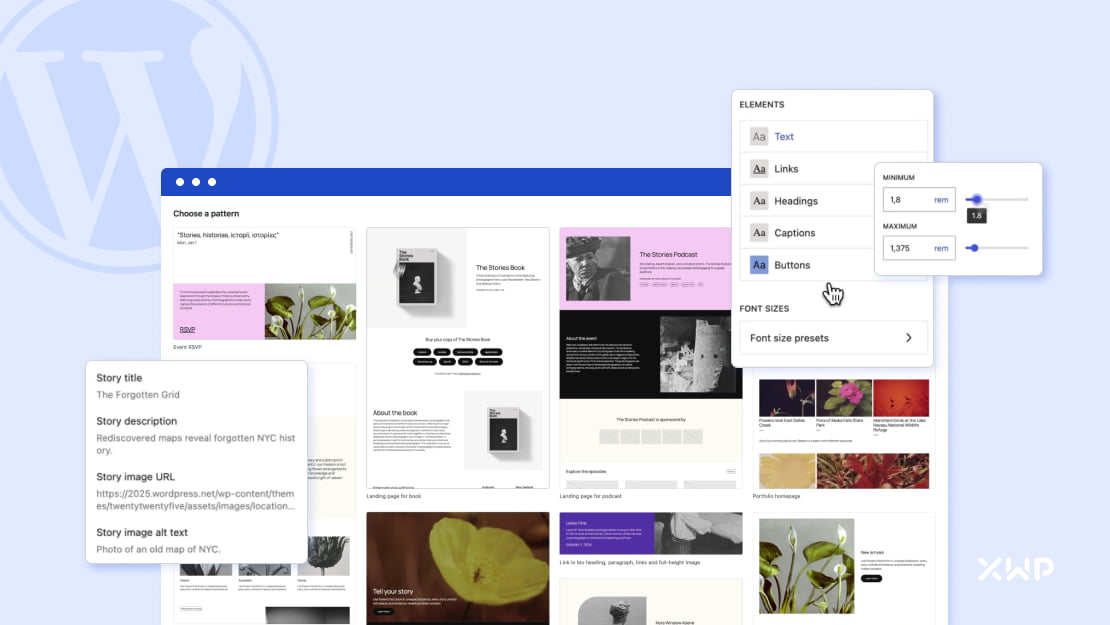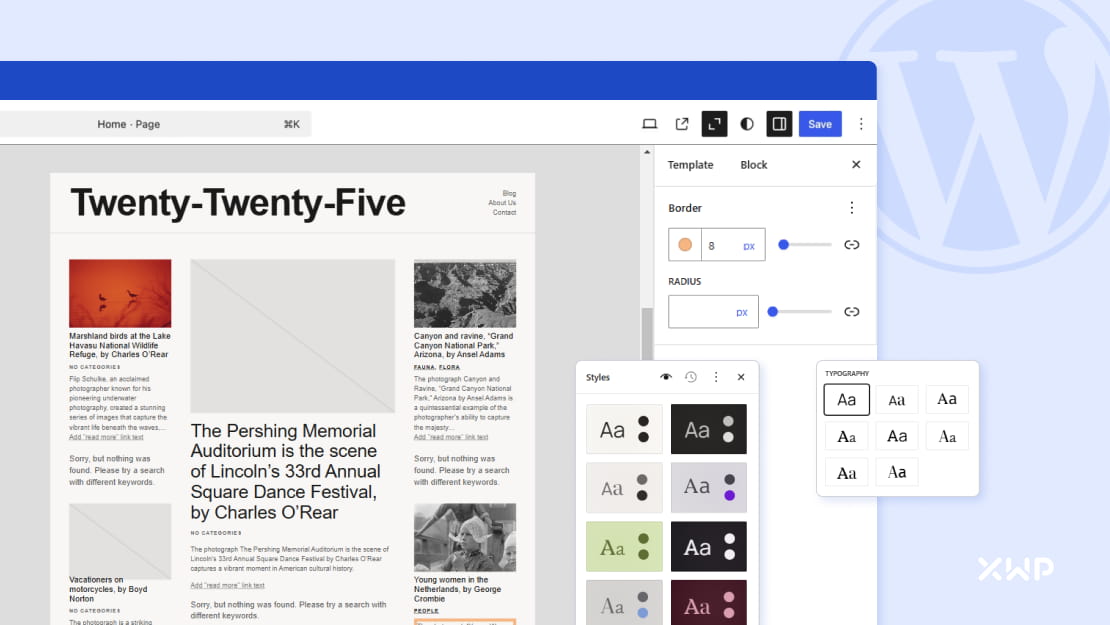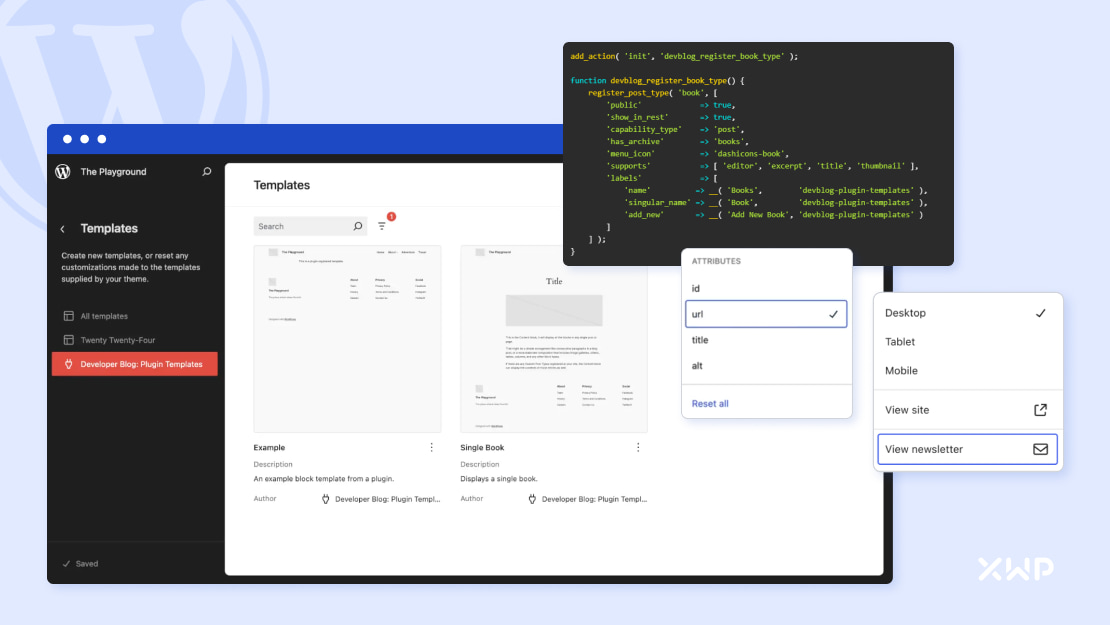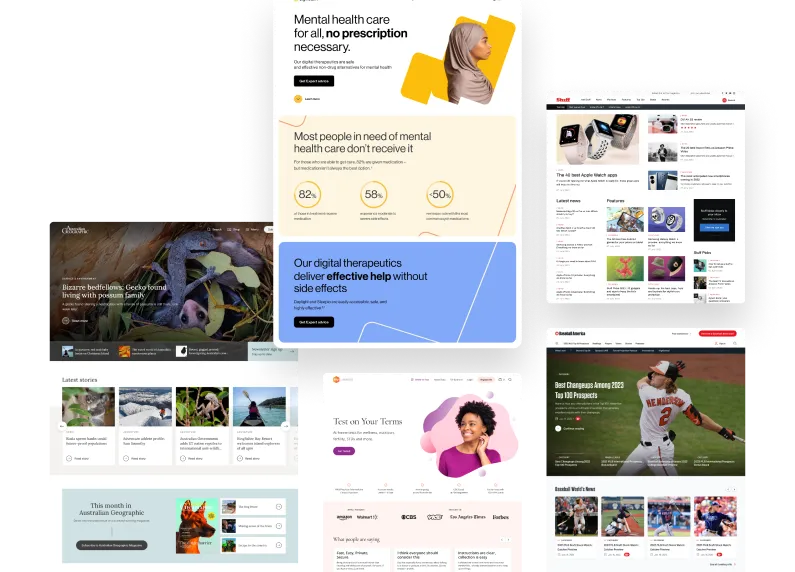WordPress 6.7 brings 1,264 enhancements, bug fixes, and improvements. That’s about 100 more than the previous release. Breaking it down, this includes:
- 445 enhancements and new features
- 464 bug fixes
- 55 accessibility improvements
- 300+ Core Trac tickets
These numbers demonstrate WordPress’s continued commitment to both innovation and stability. Here’s a list of the most notable from our point of view.

Twenty Twenty-Five
It’s a tradition for the last major release of the year to introduce a new default theme. This theme showcases all the latest additions from the past 12 months in the themes ecosystem. Twenty Twenty-Five is designed with a focus on:
- Clean, minimalist aesthetics
- Full site editing capabilities
- Pattern-first approach to layout building
- Enhanced typography controls
- Fluid responsive design
The goal is to appeal to the broadest range of users. Our perspective on the default themes is slightly different. They serve as a great source of inspiration, showing us the limits of theme creation in WordPress.

Block editor
There are tons of new features related to the block editor. Here’s a list of the most notable from our perspective, expanded with practical applications and benefits.
Zoom out view
The zoomed-out view allows editors to see the content they are working on from a distance. This feature is particularly valuable for:
- Content strategists working on long-form content
- Editors managing multiple sections
- Teams collaborating on complex layouts
- Anyone needing to reorganize content structure
This significantly improves readability and content organization. The zoomed-out view also enables users to drop patterns onto the canvas and rearrange them easily, making it a powerful tool for rapid prototyping and layout adjustments.
Enhanced block customization
More than 20 blocks were enhanced to support properties like border (including border radius), spacing, and background color. With every release, the block editor provides better visual control of the core blocks, which translates to more possibilities with less engineering effort. Remember, this is WordPress, a super customizable Swiss Army knife, so for those who like to have full control over layouts as well as look and feel, it’s still possible to disable these if that’s your preference.
More than 20 blocks were enhanced to support properties like:
- Border controls (width, style, color)
- Border radius customization
- Spacing controls (margin and padding)
- Background color options
With every release, the block editor provides better visual control of the core blocks, which translates to more possibilities with less engineering effort. Important note: This is WordPress, a super customizable Swiss Army knife, so for those who like to have full control over layouts as well as look and feel, it’s still possible to disable these if that’s your preference. This flexibility ensures that both casual users and power users can work effectively within their comfort zones.
Meta boxes in post editor
Are you familiar with those panels below the main content area? If you’re using Yoast SEO or ACF you know what we’re talking about. The improvements adds resizable panels for better workspace organization.
If you want to focus on writing the best possible meta tags and manage SEO-related settings, just maximize the panel. On the other hand, if you’re working on the copy, drag it all the way down to remove that distraction. This flexibility allows for a more personalized and efficient workflow.
Site Editor
Everything around site editing is one of the most popular topics in the whole ecosystem. The most notable features includes:
- Ability to manage color schemes within current style
- Font size presets that includes fluid typography, giving editor full visual control over the font setup
- Improved data views
- New style groups
The last one requires a separate paragraph. When in the site editor, hovering on the logo in the top left corner now shows the arrow indicating you’re navigating back within the site editor context. If you hover over your sites logo and there is an animated arrow you’ll staying in the site editor. No animated arrow, you’re going back to the old and boring dashboard.

New and updated Developer APIs
New: Template Registration API
One of the most interesting additions to the WordPress core is this API. It opens up many possibilities for building patterns within plugins. It’s no longer limited to theme-related logic. This means that plugins with multiple custom blocks can now offer full-page templates that utilize these blocks. Since these blocks are part of the plugin, changing a theme will not cause any issues.
New: Preview Options API
Another handy addition allows developers to extend the Preview dropdown menu in the post/page editor. This enhancement provides flexibility for plugin developers to seamlessly integrate custom preview options into the editor. Here are the use cases where this feature might be useful:
- Custom format previews, such as AMP and social media sharing
- Previewing content with various permissions and user roles
- Specialized preview modes, such as dark mode and email format
New: Block Type Registration API
This API enhances performance when registering multiple blocks through a plugin by creating a single PHP file, block-manifest.php. Reading one PHP file is significantly faster than reading multiple JSON files.
Updated: Block Biding API
WordPress 6.7 introduces significant improvements to the Block Bindings API, including a user interface to manage data bindings with page templates, directly in the block editor.
Updated: HTML API
The HTML API received major updates in WordPress 6.7, including:
- Enhanced performance for processing complex HTML structures
- Full HTML Support: The HTML Processor now supports practically all HTML tags, moving beyond its previous limited subset
- Improved usability through better error handling and validation
This improvement is another step toward a more standardized way of manipulating output. It reduces the need for regular expressions and other creative methods when changing the HTML you are about to render in the browser.
Updated: Interactivity API
The Interactivity API has been enhanced with new capabilities for managing server state changes during client-side navigation. Key improvements include:
- Improved @wordpress/interactivity-router module
- New subscription mechanism for state and context changes
Summary
WordPress 6.7 represents steady platform’s evolution, particularly in these key areas:
- Developer Experience: The introduction of new APIs (Template Registration, Preview Options, and Block Type Registration) provides developers with more powerful and flexible tools for customizing WordPress.
- Performance Improvements: The new block registration system using PHP files instead of JSON, along with optimizations for lazy-loaded images, demonstrates a continued focus on performance.
- Enhanced Block Editor: The addition of zoomed-out view and expanded block customization options makes content creation more intuitive and efficient.
What’s most exciting is that each release provides immediate benefits for both users and developers. These include an improved editor experience and forward-looking technical enhancements, such as the Interactivity API upgrades.
What are you the most excited about?
Watch the live stream with Pantheon to learn more:


